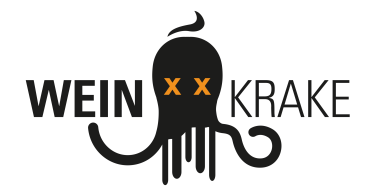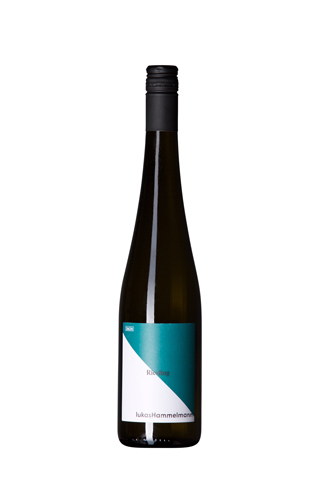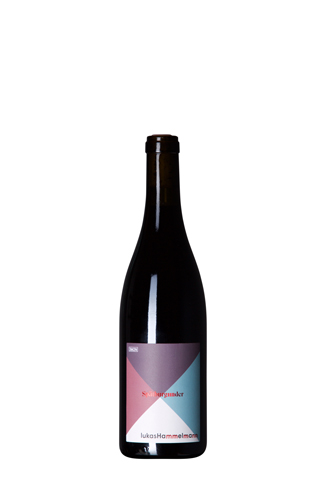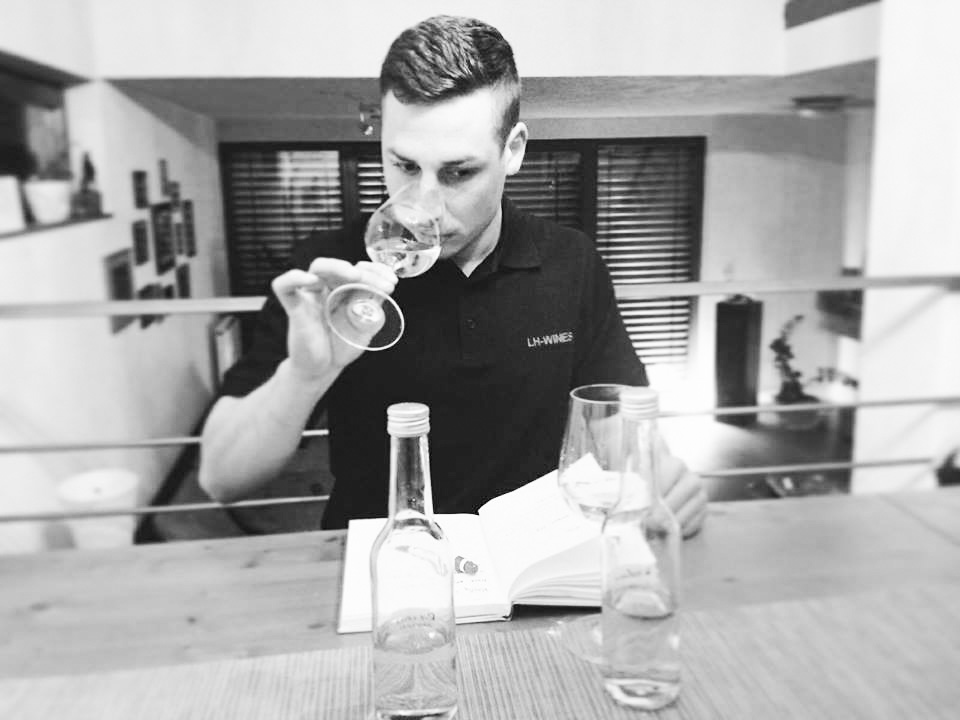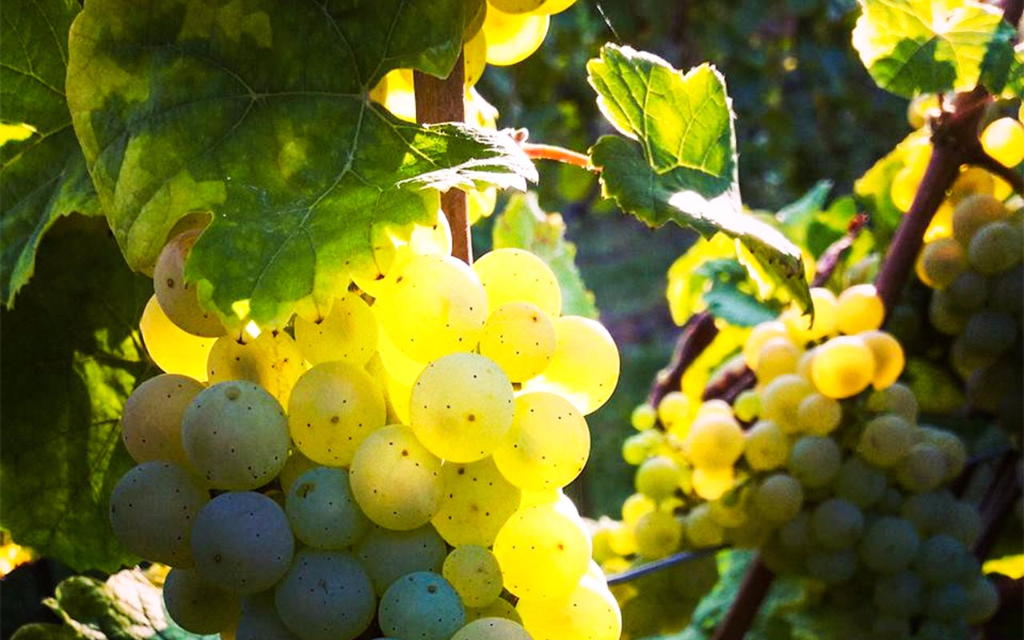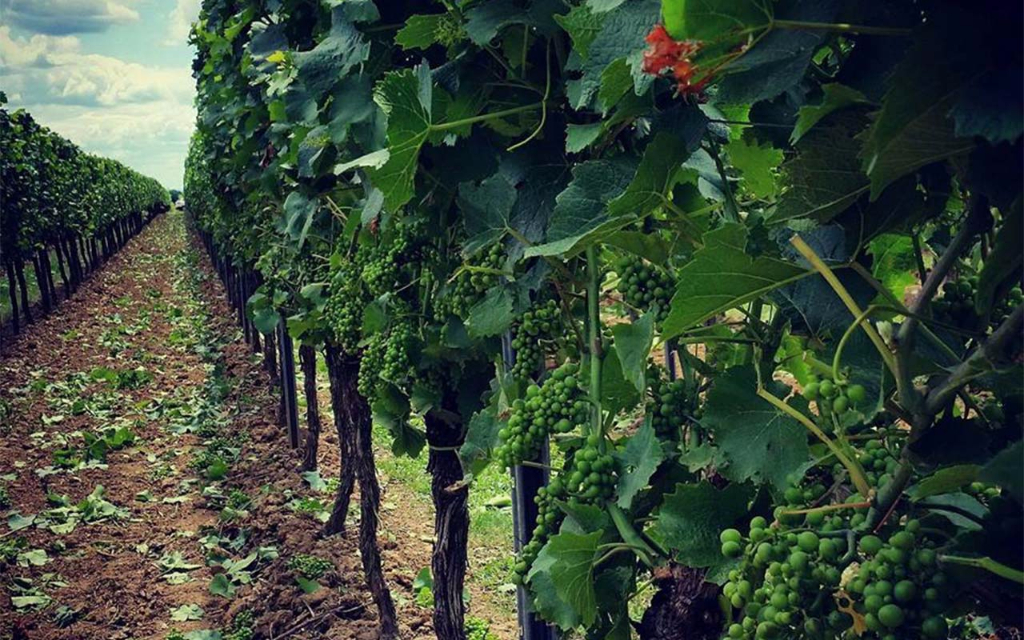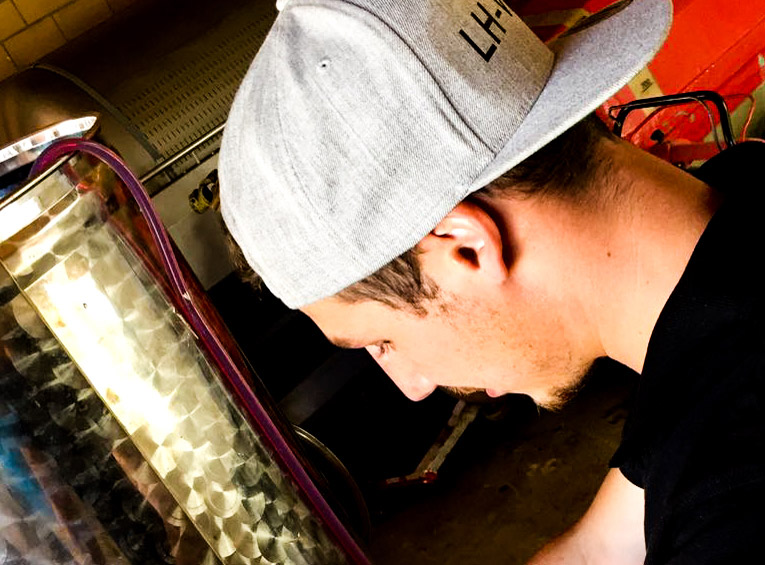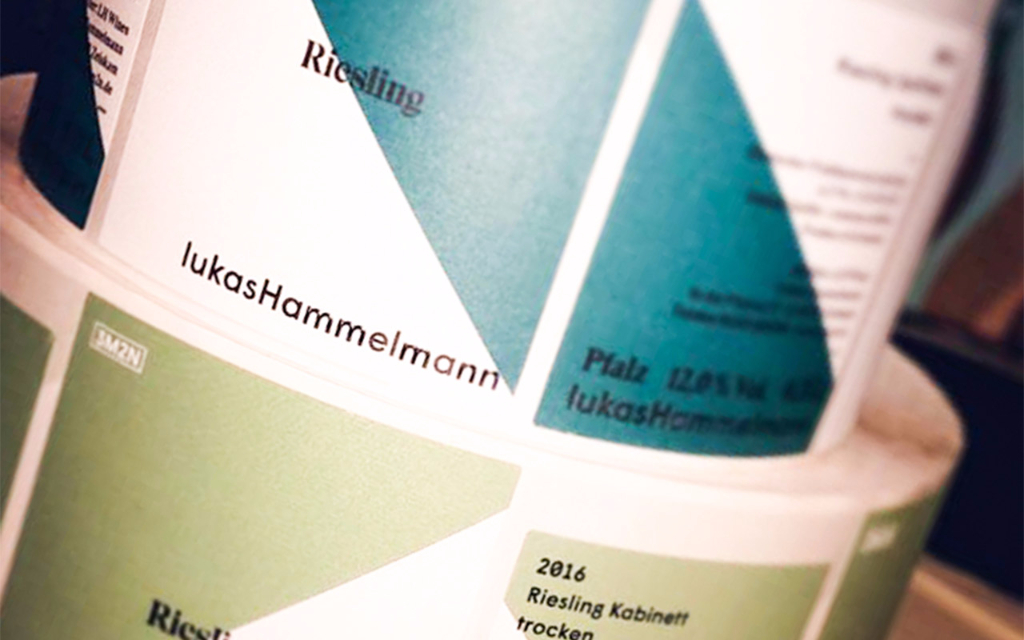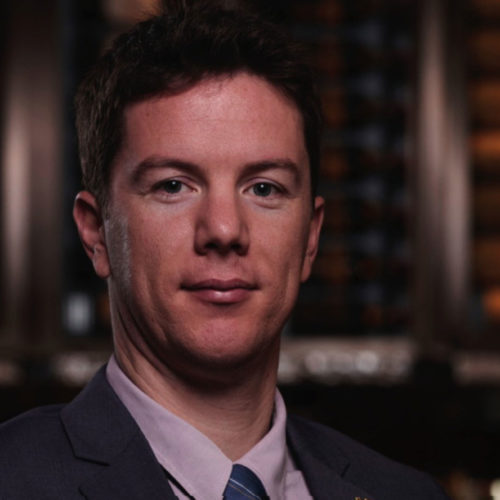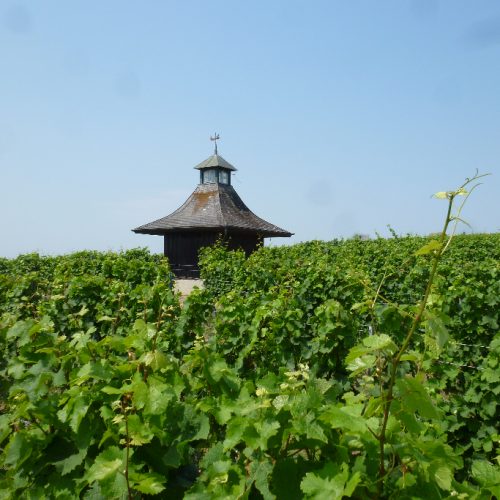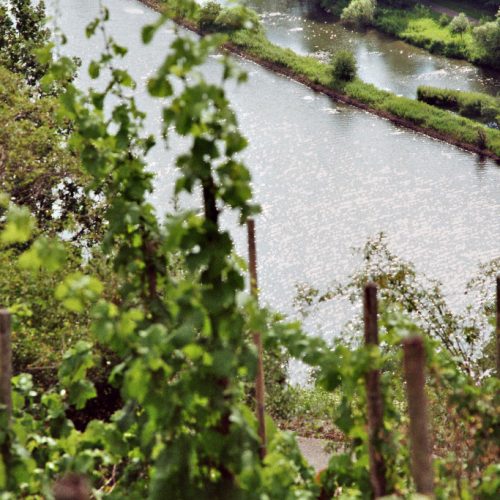The Wines
2016 Riesling Kabinett trocken
This is (Palatinate) straightness. Razor-sharp acidity. The fruit is very reduced. There is almost no sweetness. No zick zack, high speed! It is going to be a pleasure for all the pure Riesling fans out there.
2016 Riesling Spätlese trocken
Ties on the Cabinet, but everything seems more opulent. The acidity remains dominant, but it is being buffered by the extract and creates a slightly creamy texture. This is good! Strong game with reduced fruit. Nicely done!
2016 Spätburgunder trocken
The very first red one at 3m2n! It is limited to 177 bottles. It has just been filled and now it is already in our glass. Its Palatinate origin is not to deny. Elegant, intensity. Typical Pinot Noir aromas. The Palatinate wood is distinctive and developes parallel to the aroma. Everything is going to be well integrated after some rest time. At the end an elegant Spätburgunder (Pinot Noir) and fun.
The Interview
What does 3m2n mean?
This is exactly the question many people ask themselves and that is also what I wanted to provoke. It was important for me to stay in people´s minds with my wines and I try to do that with help of my logo 3m2n as well.
My surname is quiet long. By using 3M2N it is shortened to the most distinctive part (Hammelmann). It is catchy and great for websites and social media.
In 2016, your very first own wine collection LH-Wines (Lukas Hammelmann) was released. Can you tell us about your project?
Being a vintner has already been a dream of mine since my childhood, until today. When I started my apprenticeship without a parental winery, it has always been a huge goal for me to produce my own wine. When I became vintner proficient in the middle of 2015, I knew that I needed a new challenge after seven years of viniculture education.
And that is why I talked to one of my best friend who finally offered me his support. I still have some vineyards and parts of his cellar in use. And until today I am very thankful because without his support, 3m2n would not have been possible. I knew from the very beginning that my company would not be very big or produce many bottles of wine. It is just meant to be good, and in the best case even very good.
But still, this is all my hobby because during the week I work five days at the VDP Winery Theo Minges.
Retrospectively, what impressed you most after the first year?
There are two things that impressed me very much. On the one hand, the support of my family and my friends.
And on the other hand, the influence of social media. You can be very flexible and you can always get new insights and impressions of current topics. That is exactly what people want.
Why have you decided to go for Riesling and Pinot Noir? To what extent did you select your locations? What is your terroir especially good in?
I purposely decided to use those grape varieties because in my opinion, they are at the top of the German quality pyramid. A big challenge. Both varieties are sophisticated, in the vineyard so in the cellar. Very fragile varieties – no mistakes allowed. You really have to know exactly how to deal with it.
The location is, of course, very important due to its high standards. Our Riesling is situated in two different locations with perfect conditions. On one side, it is the Hambacher Schlossberg which is a very sunny red sandstone location underneath the castle of Hambach.
On the other side, we have the location Diedesfelder Berg which is also made of red sandstone and is typical for the wine growing region of the “Pfalz”. Here the soil accumulates the daylight which is very good to achieve a terroir-marked Riesling. Our Pinot Noir is growing in Hochstadt on the location Roter Berg which is an amazing location for me personally although it is underestimated very often. The vine grows on loess-clay soil with chalky clasts. The wine from those soils distinguishes itself with its juicy fruit, much strength and palatefulness.
How do you work in the vineyard and in the cellar and what music are you playing?
Quality standards is the most important. I put a lot of effort into the work with the vine itself, because it is the key to high-class wines. The vineyards are not ours though – that would be too much for the beginning.
I talked to many colleagues of mine and we agreed on it, which is a very high priority for me. All the handicraft of the vineyards is ours because this is the only way to be able to decide when and which quality orientated activities need to be done.
All our grapes are harvested by hand with much feeling and attention and they are strongly selected too. I do not follow a recipe in the cellar that I repeat every year (“Cuvée on a straight line and a spontaneous slalom”). Every vintage and every harvest is judged individually and in the end we decide which steps are necessary or which ones are not. I try to give the wine the silence it needs to unfold slowly and to find its own character.
I mostly enjoy the silence on the vineyard and try to focus completely on work. But I sometimes listen to music when I am in the cellar. But in that case I do not listen to anything specific, but everything that’s currently available.
What should young people bring along to be able to run such a project?
It is not easy. You should definitely bring some experience along. Ambition and volition are very important in the beginning because it does not always go into the right direction.
You also will have to deal with unexpected problems. Family and friends also play a big role. They are always there to back you up and to help. That is very important and impressed me a lot.
This is what you are saying about your style of wine: “Cuvée on a straight line and spontaneous slalom that gives wine-making its tension” – what does this mean?
By that I mean that there is no recipe in wine growing and maturing wine that you can reuse every year. It is important to have a concept and to know into which direction othe wine should develop. But every year is different and sometimes not easy. This asks for flexibility and spontaneity to think differently. That is exactly why I am so excited every year to take a challenge and receive the best possible result.
How many bottles of your wine will be available in the market?
In the first year, there have been three types of wine and 1200 bottles. In the new vintage of 2017 there will be four new wines and there should be a production of about 2200 bottles. After that, I do not want to put any new varieties on the market, but I would like to slowly increase the amount of the seven grape varieties. But there will not be more then 5000 bottles in the next time. I would rather stay a small but fine wine manufacturer with extraordinary character wines.
As we can see, there are also cool snapbacks on your new homepage. Are there still some available and where can you get them?
I got gifted one in the past and since I sometimes wear snapbacks myself, I produced some for sale. The snapbacks are still available in different colours and shapes on the website.
Will you sell your wine online?
Good question. At the moment, the bottles are very limited and often quickly sold out. If the quantity rises, I also have to extend the sales and then I might think about it.
Who would you like to drink a bottle or two of wine with?
You have one wish…?
To stay healthy my family and I, no appointments and to slightly have one too many. ![]()
+ info
